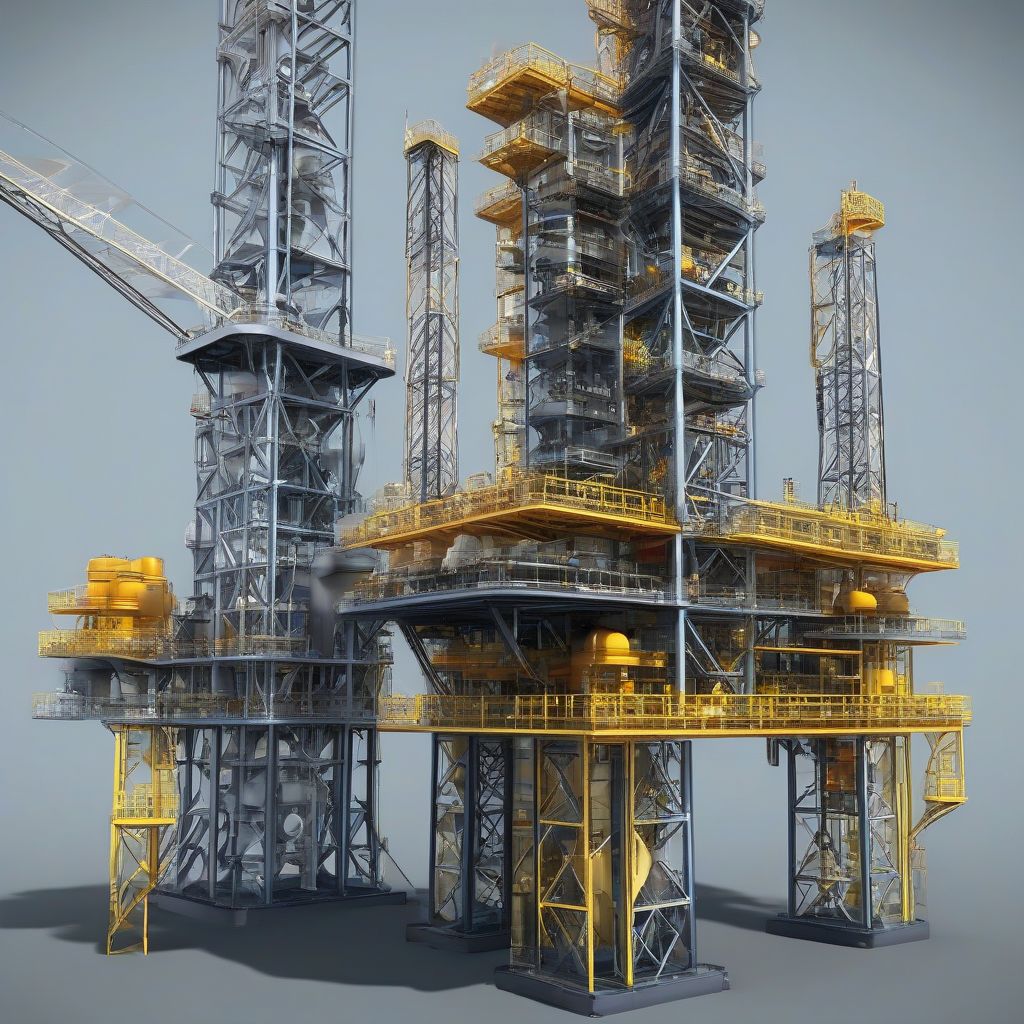Optimizing Oil and Gas Operations: A Deep Dive into Asset Management Software
The oil and gas industry is a complex ecosystem of exploration, production, refining, and distribution. Every stage in this journey involves substantial investments in assets – from drilling rigs and pipelines to refineries and storage facilities. Managing these assets effectively is paramount to profitability, safety, and environmental responsibility. This is where Oil And Gas Asset Management Software emerges as a critical tool for companies striving for operational excellence.
Imagine having real-time visibility of your assets scattered across vast geographical locations, coupled with the ability to predict maintenance needs and optimize resource allocation. This level of control and insight is no longer a futuristic fantasy but a tangible reality, thanks to the advancements in asset management software tailored for the oil and gas sector.
What is Oil And Gas Asset Management Software?
Oil and gas asset management software encompasses a suite of integrated applications designed to streamline and optimize the entire lifecycle of physical assets within the industry. From acquisition to disposal, this software empowers companies to manage, track, and analyze every aspect of their assets, including:
- Asset Registry: Maintaining a centralized database of all assets with detailed information such as location, specifications, maintenance history, and associated documentation.
- Maintenance Management: Scheduling preventive and corrective maintenance, tracking work orders, managing spare parts inventory, and ensuring regulatory compliance.
- Inspection and Compliance: Streamlining inspection processes, tracking regulatory requirements, and generating reports to demonstrate compliance with industry standards and government regulations.
- Risk Management: Identifying, assessing, and mitigating risks associated with asset failure, environmental impact, and safety hazards.
- Performance Analysis: Monitoring asset performance, identifying bottlenecks, and optimizing utilization to maximize productivity and reduce downtime.
Answering Your Questions: Oil And Gas Asset Management Software in Focus
The adoption of asset management software is becoming increasingly prevalent in the oil and gas industry. Let’s address some common questions surrounding this technology:
1. What are the key benefits of implementing asset management software in oil and gas operations?
Implementing a robust asset management system yields a multitude of benefits, including:
- Reduced Downtime: Proactive maintenance planning and early detection of potential issues minimize unplanned outages, leading to significant cost savings.
- Extended Asset Lifespan: Optimized maintenance schedules and proactive repairs help extend the operational life of assets, maximizing return on investment.
- Enhanced Safety and Compliance: Streamlined inspection processes, risk mitigation tools, and automated reporting ensure compliance with safety regulations and minimize environmental impact.
- Improved Decision Making: Real-time data insights and comprehensive analytics empower informed decision-making regarding asset allocation, maintenance strategies, and investment priorities.
- Increased Operational Efficiency: Automation of routine tasks, streamlined workflows, and improved communication channels contribute to increased efficiency across the board.
2. How do I choose the right asset management software for my oil and gas company?
Selecting the optimal software solution requires careful consideration of several factors:
- Specific Needs and Requirements: Identifying the specific challenges you aim to address and the desired outcomes from the software implementation.
- Scalability and Flexibility: Choosing a solution that can adapt to your company’s growth and evolving needs over time.
- Integration Capabilities: Ensuring seamless integration with existing systems, such as ERP or financial software, to avoid data silos.
- User-Friendliness: Prioritizing software with an intuitive interface and easy-to-use features to ensure smooth adoption across the organization.
- Vendor Expertise and Support: Opting for a vendor with a proven track record in the oil and gas industry and reliable customer support.
3. What are the latest trends shaping the future of Oil And Gas Asset Management Software?
The landscape of asset management software is constantly evolving. Key trends shaping the future include:
- Cloud-Based Solutions: Cloud computing offers scalability, accessibility, and cost-effectiveness, making it an increasingly popular choice for oil and gas companies.
- Artificial Intelligence (AI) and Machine Learning (ML): AI and ML algorithms are being integrated to enhance predictive maintenance, optimize asset performance, and automate decision-making.
- Internet of Things (IoT) Integration: Connecting physical assets to the internet allows for real-time data collection and analysis, enabling proactive maintenance and remote monitoring.
- Mobile Accessibility: Mobile applications provide field technicians with instant access to asset information, work orders, and reporting tools, enhancing efficiency and responsiveness.
gas.areview.net/wp-content/uploads/2024/09/oil-rig-digital-interface-66dff6.jpg" alt="Oil Rig with Digital Interface" width="1024" height="1024">Oil Rig with Digital Interface
Navigating the Future: Oil and Gas Asset Management in a Changing World
As the oil and gas industry confronts evolving market dynamics, environmental concerns, and increasing regulatory scrutiny, optimizing asset management becomes more critical than ever. Companies that embrace digital transformation and invest in robust asset management software will be better positioned to:
- Enhance Productivity and Profitability: Streamlined operations, reduced downtime, and optimized resource utilization translate into tangible financial gains.
- Improve Safety and Environmental Stewardship: Proactive risk management, compliance monitoring, and reduced environmental footprint demonstrate corporate responsibility and sustainability.
- Gain a Competitive Edge: Data-driven insights, operational agility, and enhanced decision-making enable companies to stay ahead of the curve and adapt to market fluctuations.
In conclusion, oil and gas asset management software is no longer just a technological advancement but a strategic imperative for companies striving for operational excellence, sustainability, and long-term success. By embracing this digital transformation, the industry can navigate the challenges of the future while unlocking new possibilities for growth and innovation.
